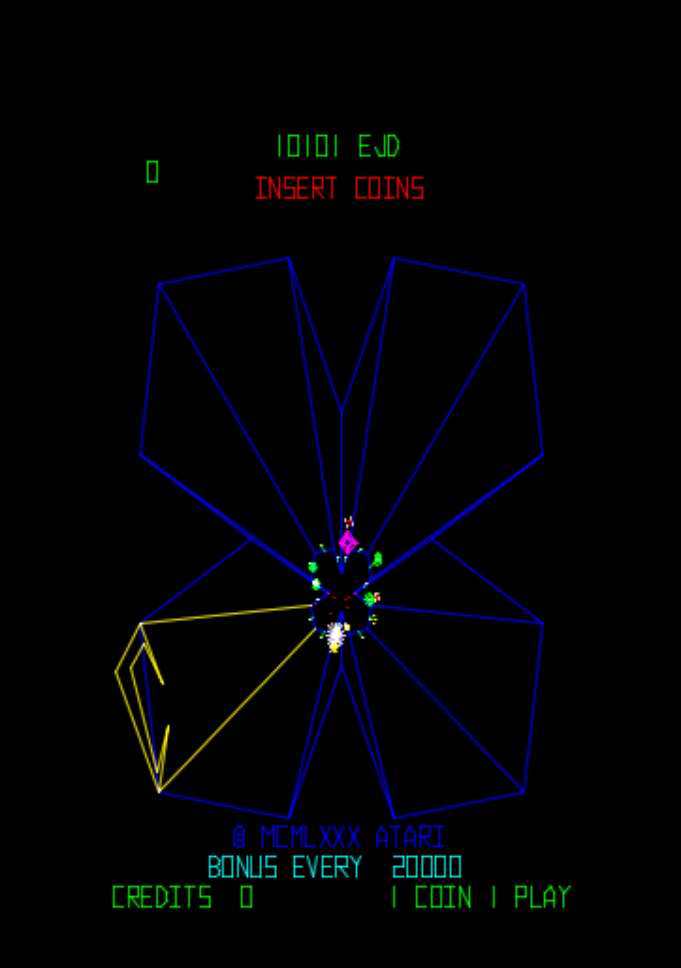Tempest
He that dies pays all debts.
3D graphics were the holy grail of gaming for a long number of years, and developers battled tooth and nail against technology to deliver a realistic experience to arcade punters. As we look back now with myopic hindsight, we can see those early attempts were great not because of their pseudo three dimensional visage; it's because the designers were striving to break down barriers.
Tempest is the epitome of this amazing era of exploration. Providing a loose Space Invaders clone that displayed the action from the perspective of the laser, Atari inadvertently broke a mould it was not even trying to bend. Using the brand new, slick colour vectors Atari grew to be so proud of, Tempest crafted simple, yet dynamic, static environments of all shapes from angular tubes to jagged geometric arcs. The player guided their ship around the circumference of the playfield using a rotary controller, shooting various enemies gunning their way along the 3D vectors.

While the black screen and genre expectations suggest Tempest is a space-based shooter, there's something subtle about its design that insinuates a microscopic, subatomic or electronically ethereal adventure going on. The enemies known as Spikers, Flippers, Tankers, Fuseballs and Pulsars all resembles some kind of self-aware, hostile particle or electron, intent on negating the probe-like device controlled by the player. Sending destructive charges along the lines of the playfield is equally representative of a minuscular, atomic war being magnified a million or more times on an arcade monitor for beings of immense proportions to take control of.
In truth, Tempest probably looks the way it does due to the restrictions of drawing with vectors, but that doesn't change the limitless possibilities of this awesome game's beautifully realised potential.
